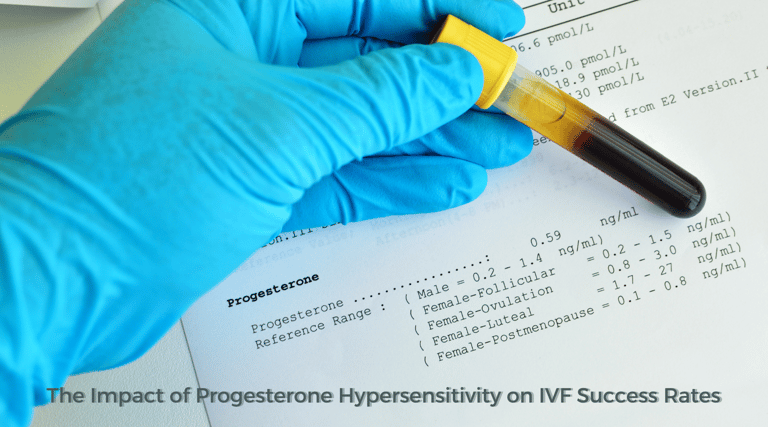The Impact of Progesterone Hypersensitivity on IVF Success Rates
As progesterone is being used increasingly to treat infertility, dermatologists, obstetricians, and allergologists need to familiarize themselves about the rare entity of APD and the various treatment options to safely treat it in all women.


Mechanism: The exact cause of PH remains unclear, but it is believed to be an immune-mediated reaction to progesterone. The body's immune system mistakenly attacks healthy cells due to misidentification.
Symptoms: PH manifests through various dermatological and, in severe cases, systemic symptoms. Common signs include urticaria (hives), maculopapular rash (red, raised bumps), itching, and burning sensation. In severe cases, individuals may experience fever, angioedema (swelling of deeper skin layers), and even anaphylaxis (a potentially life-threatening allergic reaction).
Progesterone and ART:
Importance: Progesterone plays a critical role in supporting the uterine lining (endometrium) for successful implantation and maintaining pregnancy in ART procedures like in vitro fertilization (IVF).
Increased Risk: Individuals undergoing ART are exposed to exogenous progesterone administration through various routes.
Heightened Susceptibility: Studies suggest that ART patients may be more susceptible to developing PH due to: Repeated exposure: Progesterone administration is often prolonged and continuous during ART cycles. Altered immune function: Hormonal fluctuations and stress associated with infertility treatments could potentially influence the immune response.
Managing Progesterone Hypersensitivity:
Early diagnosis: Early identification of PH symptoms is crucial for prompt intervention and preventing complications.
Alternative Progesterone Administration: Healthcare providers may explore alternative routes or formulations of progesterone to minimize the risk of allergic reactions.
Desensitization Therapy: In specific cases, desensitization protocols can be attempted to gradually introduce progesterone and potentially overcome the immune response.
Symptom Management: Medications like antihistamines and corticosteroids may be used to manage symptoms like itching and inflammation.
Conclusion:
Progesterone hypersensitivity poses a challenge in ART settings. While relatively rare, it's crucial for healthcare professionals and patients to be aware of its potential, identify symptoms promptly, and explore alternative strategies to ensure successful treatment and patient well-being.